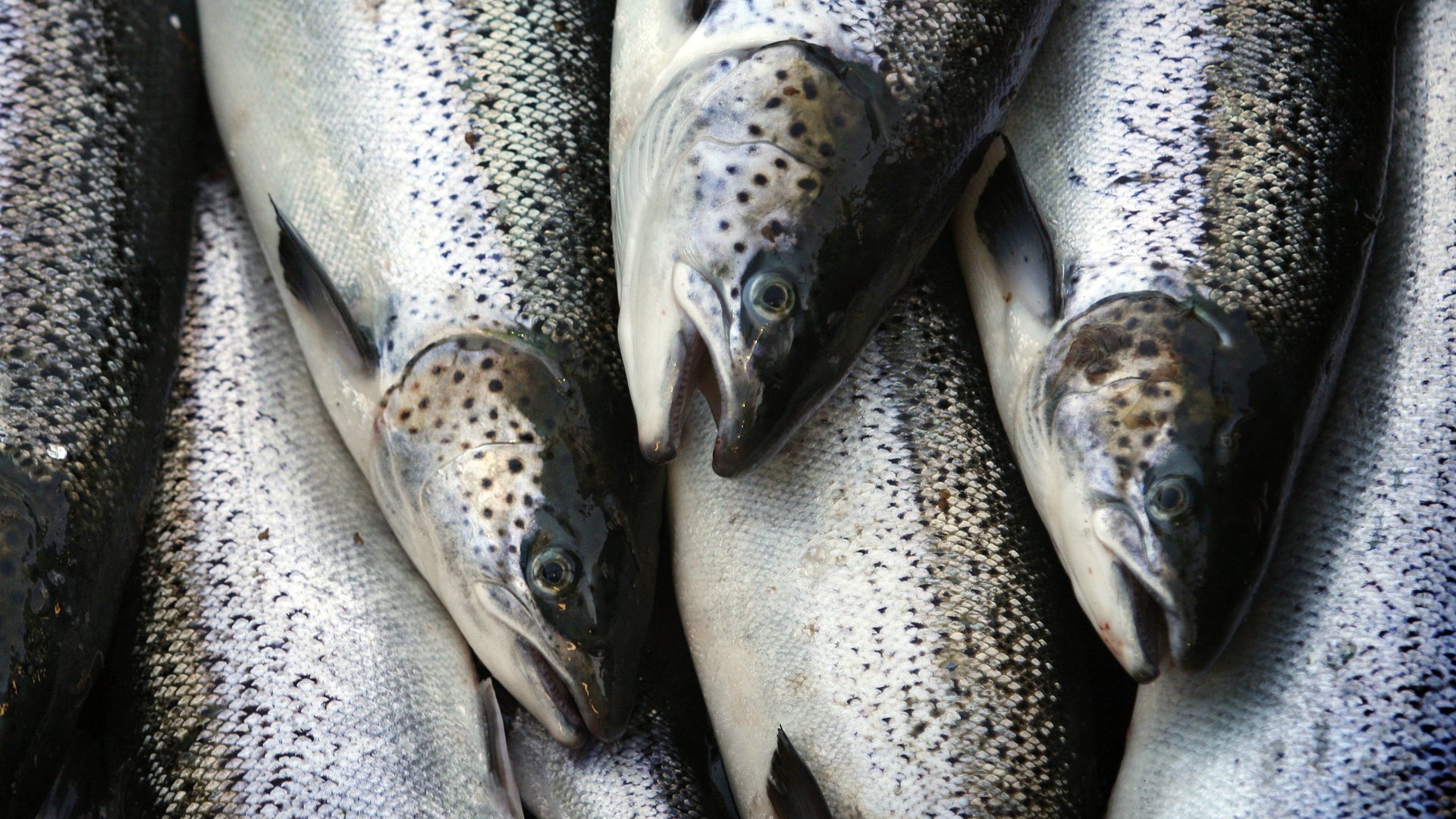The rollout of the first genetically modified food animal is being bungled
Four-and-a-half tons of genetically modified salmon have been released into the Canadian food market, and consumers have no way of knowing exactly where.


Four-and-a-half tons of genetically modified salmon have been released into the Canadian food market, and consumers have no way of knowing exactly where.
The release has roiled GM food skeptics, who say there’s no way for them to figure out whether the fish—sold by Massachusetts-based AquaBounty Technologies—were purchased by Canadian retailers, restaurants, or food service operators. Even more frustrating to them, the Canadian government does not require GM foods be labeled as such, making them virtually impossible to avoid.
“The first immediate concern is from Canadian consumers,” says Lucy Sharratt, a coordinator of the Canadian Biotechnology Action Network, a group skeptical of GM foods. “Many of them want to know where it is on the grocery store shelves because they don’t want to be eating it, or they want the choice.”
Despite some reluctance to embrace genetically modified foods, available science has long supported the claim that the salmon and other GM foods are safe to eat. The US Food and Drug Administration deemed the fish safe in 2015. Health Canada followed suit the next year. The National Academies of Sciences, Engineering, and Medicine, a US-based, nongovernmental nonprofit, came to the same conclusion about genetically modified foods, in general. So has the European Commission, and the World Health Organization.
What’s happening in Canada with the rollout of the salmon—the first country in which it will be sold—is noteworthy because, in the last decade, a negative narrative, fair or unfair, has developed around genetically modified foods, driven by a relatively small but vocal contingent of skeptics who want to avoid eating those foods. Until now their ire has been aimed at GM corn, soybeans, and other plant products. But AquaBounty is introducing the first genetically-modified food animal to its first market, a powerful moment for future foods.
How the company uses that moment could set a tone not just for how the public receives GM salmon, but other GM food animals coming down the pike. Quartz reached out to AquaBounty to learn more about the salmon rollout and its future plans. The company did not make someone available to discuss those topics. It did send by email a copy-pasted quote from a recent US Securities and Exchange Commission filing about AquaBounty’s two production facilities currently under construction, one in Indiana in the US and one in Rollo Bay on Prince Edward Island in southeast Canada.
“We expect that sales of our fish will be infrequent and of small quantities until our Indiana and Rollo Bay facilities are operational and the fish in those facilities have matured, which is expected in the second half of 2019,” the company states.
AquaBounty’s GM salmon product is a new fast-growing fish. It was created by inserting some DNA code into a fertilized salmon egg. The new DNA is composed of a growth hormone gene from a chinook salmon and a string of gene-triggering DNA from pout, an eel-like fish that has antifreeze proteins in its blood.
The public reaction to AquaBounty’s debut has led some retailers to publicly distance themselves from the drama. The chain of groceries owned by Independent Grocers Alliance (IGA) says on its website that it does not carry the fish. Costco says on its site that it “does not intend to sell genetically modified salmon.”
Speaking generally about foods sold on the commercial market, Greg Jaffe, who follows biotechnology issues for the Center for Science in the Public Interest, says transparency is key to acceptance. “Information about a product that may be important to some set of consumers should not be hidden from those consumers,” Jaffe says. “If information is hidden from consumers, they are going to wonder why it’s hidden.”
In contrast to the marketing and selling of the GM salmon, the non-browning, GM “Arctic” apple is sold in retail stores with distinctive packaging that includes the company’s website, where consumers can go to learn how the apples are made. The site also lists the places the fruit is sold.
In July 2016, then-president Barack Obama signed into law a bill that created a federal labeling standard for foods containing GM ingredients. The creation of the law was the crescendo of a long-running campaign by activists demanding clear labeling to know what’s going into their foods. The exact details of the new rules are still being ironed out by the US Department of Agriculture.
Earlier this year, Canada’s House of Commons voted overwhelmingly against a similar bill.